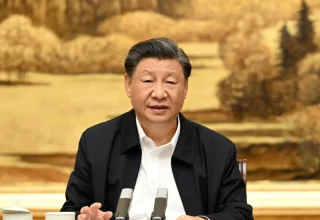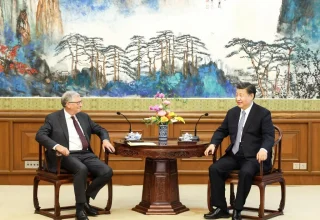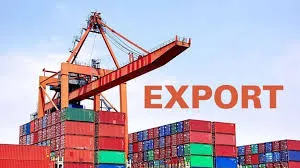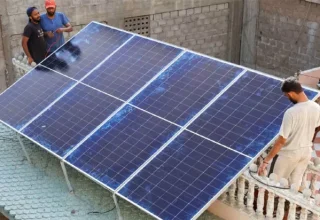
It seems that the Xinjian socio-economic model is the replica of the CPC socialist modernization caring about people, channels of production gearing towards economic self-reliance, economic diversity and congruent community development.
Most recently the Chinese President Xi Jinping visit attended a grand gathering in celebration of the 70th anniversary of the founding of the Xinjiang Uygur Autonomous Region which has inspiring effects on its people striving hard to achieve the desired goals of socio-economic prosperity, social integrity, political stability through promoting ethnic diversity, multiculturalism, rule of the law and last but not least, protection of basic human rights.
Hence, Xinjiang has been completely transformed by the CPC, central government’s supervision and people’s centric economic policies and showing great concern for its people of all ethnic groups.
The Chinese official data highlights Xinjiang promising economic indicators. In 2024, it recorded a 6.9 percent increase in fixed-asset investment, 8 percent growth in value-added industrial output from enterprises above designated size, and a 10.5 percent rise in general public budget revenue. Thus immense investments are gaining momentum changing the outlook of its economy, community and enterprising world.
Additionally, its GDP has witnessed an average annual rate of 7.04 percent since 2012. In 2024, it expanded by 6.1 percent, surpassing 2 trillion yuan (about $281.4 billion) for the first time, 203 times that of 1955, reaching an average annual growth rate of 8 percent reflecting its diversified and dynamics economic potential surpassing all hurdles and generating a harmonious society working jointly for achieving their dreams of a qualitative life because of the CPC economic wisdom and constant structural reforms in the region.
The population of Xinjiang has increased from 4.78 million in 1953 to 25.85 million in 2020, with the ethnic minority populations growing from 4.45 million to 14.93 million during the same period repudiating western propaganda about any kind of human right violation against any specific ethnic group in the region.
Comparative economic studies reveal that Xinjiang was once among the most impoverished regions in China. However, the nationwide poverty-reduction campaign was launched in 2012, all 3.06 million rural residents living in poverty had been lifted out of poverty by the end of 2020 in the region. Thus it put an end to the absolute poverty that had gripped the region for millennia.
Moreover, since 2012, 47.9-billion-yuan investment education funding has tremendously improved the facilities of primary and secondary schools in Xinjiang. Interestingly, today, there is one kindergarten for every 106 children in Xinjiang, and one primary school for every 817 students. Thus increasing public financing is on the rise raising the standards of education and making an educated nation.
Evidently, significant progress has also been registered in combating desertification. The Taklimakan Desert is now encircled by a sand-blocking green belt stretching 3,046 kilometers, the longest in the world which has become an iconic “Green Wall” project in the world disseminating a spirit of hope to fight against increasing incidents of global warming.
Exceptionally, the increase of its total oasis area by 56.6 percent over the past three decades clearly demonstrates its successful and structured campaign against global warming.
Resultantly, despite western propaganda Xinjian has now been dubbed as land of peace, prosperity, and peaceful persuasions disproving all false, fake and fabricated propaganda of the western media and political hype of the greedy politicians.
Furthermore, real progress has also been made in poverty eradication, rural-urban employment, education, health services and social security and the fruits of development are being shared more equitably among all ethnic groups. So, Xinjiang’s high-quality economic and social development has ensured that the right to development is realized for everyone in the region.
Thus there is no economic marginalization, economic favoritism and any fiscal discrimination is being carried against any specific ethnic group. Every group has economic equality, social dignity and political justice living a decent life without any fear.
While attending the various meetings Xi shared a strategic road map of further socio-economic prosperity and building of a socialist modern Xinjiang through unity, harmony, prosperity, affluence, cultural progress and a sound eco-environment, where people live and work in peace and contentment.
It is a good omen that Xinjian has undergone profound changes in past decades and now is advancing modernization in step with the rest of the country by policy support.
When meeting with representatives from all ethnic groups in the region Xi extended greetings to them and urged concerted efforts to better build a beautiful Xinjiang.
In recent years, Xinjiang has further integrated its rich natural resources and geographic advantages to transform from a simple resource supplier into a vibrant modern industrial hub and from a remote inland region to a forefront of openness, modernization, digitalization and AI.
Obviously Xingjian is emerging as a national base for high-quality agricultural products. It achieved the highest grain yield per unit area in China for 2024, with an average of 7872.75 kilograms per hectare, and the cotton output reached nearly 5.69 million tonnes, accounting for 92.3 percent of the national total, said the white paper. Thus agriculture modernization and hybrid agriculture are gaining momentum in the region.
It is also building itself into a strategic base of the nation’s energy resources. Installed capacity of electricity hit 192.7 million kW in 2024, of which capacity from new energy sources surpassed 100 million Kw.
Xi emphasized that Xinjiang should leverage its resource and industrial strengths to explore a high-quality development path suited to its local conditions and foster its new quality productive forces accordingly.
Xi also urged Xinjiang to accelerate the building of the core area along the Silk Road Economic Belt during the meeting.
Bordering eight countries, Xinjiang has become a crucial link between Asia and Europe. In 2024, a total of 16,400 China-Europe freight trains passed through the region, marking the fifth consecutive year that the number of trains exceeded 10,000.
In summary, Xingjian has been contributing to safeguarding national energy, critical minerals and food security. With the in-depth advancement of the Silk Road Economic Belt core area construction, Xinjiang is stepping onto the world stage with greater confidence.
Interestingly, in 1949, Xinjiang’s total highway length was just over 3,000 kilometers, and road conditions were poor. By the end of 2024, the total highway length across the region had reached 230,000 kilometers, with all eligible administrative villages connected by paved roads and passenger transport confirming world class infrastructure development in the region transforming its public transport making lives of its people easy.
Moreover, the regional GDP increased 749.9 billion Chinese yuan in 2012 (around $105 billion) to 2,053.4 billion yuan ($287.9 billion) in 2024, with an average annual growth rate of 8 percent. The total import and export volume increased from 158.96 billion yuan ($22.3 billion) in 2012 to 434.16 billion yuan ($60.9 billion) in 2024.
In recent years, Xinjiang has allocated more than 70 percent of its annual general public budget expenditure to ensuring and improving people’s livelihood. By the end of 2024, a total of 2.73 million rural housing units had been built, helping more than 11 million people of all ethnic groups move into spacious, bright and safe homes.
As of 2024, Xinjiang had more than 19,000 medical and health institutions at all levels, with the standardization rate of township health centers and village clinics reaching 100 percent. Average life expectancy has increased from 30 years in 1949 to 77 years in 2024.
In 2024, the retention rate of nine-year compulsory education in Xinjiang reached over 99 percent, higher than the national average. In the southern Xinjiang regions of Aksu, Kashi, Hetian and the Kizilsu Kirgiz Autonomous Prefecture, 15 years of free education.
Last but not least, Xingjian has become an ideal model of people’ growth in terms of stable and sustainable economic conditions, generation of new jobs, economic equality with immense new economic opportunities increasing their incomes.
The so-called human right violation’s surgical strike of Western mass media, think tanks and policy makers have been rebutted through immense socio-economic prosperity, environment friendly productive channels, provision of basic necessities of life and protection of basic human rights through eradication of poverty, social justice, rule of the law, respect of ethnic diversity and preserving multiculturalism in Xinjiang. Thus colors of Western human rights propaganda have faded and diminished.
































